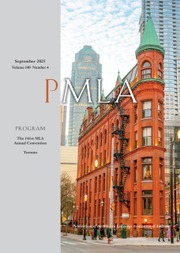Article contents
The Father and the Bride in Shakespeare
Published online by Cambridge University Press: 23 October 2020
Abstract
Although sixteenth-century daughters were evidently an economic burden on their fathers, Shakespeare consistently depicts fathers whose love for their daughters is so possessive that it endangers the family unit. To delineate the tensions of this bond at its liminal moment, Shakespeare evokes the altar tableau of the marriage service. This paradigmatic substructure illuminates the central conflict in the father-daughter relationship: the father who resists the ritual's demands to give his daughter to a rival male destroys both his paternal authority and his family's generative future; yet the daughter who escapes without undergoing ritual severance violates the family structure and thus becomes both guiltlessly agentive in ruining her original family and tragically incapable of creating a new one. The marriage ceremony is designed to resolve this paradox. In Shakespeare's dramas, submission to this rite ensures the only possibility of freedom for the individual and of continuity for the family.
- Type
- Research Article
- Information
- Copyright
- Copyright © Modern Language Association of America, 1982
References
Works Cited
- 22
- Cited by


